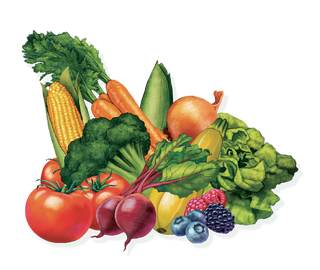Bulbs
This section also includes TUBERS, CORMS, RHIZOMES, AND TUBEROUS ROOTS
Spring-flowering bulbs, such as tulips and daffodils, can be interplanted among perennials to provide the garden with color in spring, a time when most perennial borders are short on color. Store bulbs in a cool, dry place until ready to plant. In colder areas, do not plant until danger of frost has passed. When planting, dig generous-size holes. Plant bulbs pointed-side up unless otherwise specified. Soil should be well-worked. Water generously. Bulbs thrive in almost any well-drained soil if the proper nutrients are present. Bonemeal makes an effective fertilizer at planting time. Bulbs that stay underground year-round should be protected by mulch in winter. Summer mulching to conserve moisture is a good idea, too. After blooming season is over, do not cut back leaves while they're still green because the plant's leaves nourish the bulb continually. Remove spent blooms.
Pink Daffodils: When Pink Daffodils first unfold, the trumpet is a lovely yellow-apricot color which will gradually change to a soft pink. It is important to plant this variety in a shaded or partially shaded area, as full sunlight will turn the trumpet pale.
Growing Bulbs in Sunbelt States: Because Tulips, Crocuses, Dutch Iris and Hyacinths require cool soil conditions before blooming, you must give them an "artificial winter." Lift (dig up) your bulbs every year after foliage yellows and place them in the refrigerator for 8-12 weeks before replanting. Never store bulbs with fresh fruit.
For container plantings, you have several alternatives:
- bury the pots in a 12" deep trench and cover with 6-8" of moist mulch such as wood shavings, sawdust, sand peat moss or soil;
- place pots in a shaded cold frame and bury as described above; or
- place pots in a deep basket or box, cover with 6-8" of mulch and store in a cool, shady garden spot.
After 8-12 weeks, check for roots emerging from drainage holes or sprouts sprouting through the soil. Put in a shady location until shoots turn green, then move pots into the sun. Daffodils, Tulips, Crocuses, Dutch Irises, Hyacinths, Scillas and Fressias do well in containers their first bloom season, after which they can be planted directly in the garden.
Tulips
Choose a well-drained location and space 6" or more apart. The lighter the soil, the deeper the tulips should be planted. In colder areas, holes 4-5" deep are usual. In southern states, 7-9" deep is recommended. Take care to place bulbs firmly at the bottom of the hole. Bonemeal may be added to promote more vigorous blooming. Fill the hole half full with soil, pressing soil firmly around bulb. Water thoroughly and fill hole to top with soil. Water again, very thoroughly. Continue watering during the spring growing season and through to fall if dry.
To induce better bulb growth, cut flowers for indoor use or as soon as they fade. You may also sprinkle fertilizer around established bulbs each fall. Never cut foliage unless it is brown. Bulbs may be left underground all year. To relocate tulips, dig them up after leaves have turned brown. When the bulbs are dry, remove the roots and clean off dirt. Store in a dry airy place until fall planting time.
Naturalizing
It's easy to create a natural landscape with bulbs that multiply quickly and flourish with little care. Many tulips, daffodils, crocus, and lilies are long-lived and vigorous enough to compete with grass, weeds and trees. Choose one bold color to blanket a field, or mix colors in clusters near tall tress. When mixing bulbs, combine early and late varieties, tall and short growers, and different colors that blend well. For variety and interest, use nature as your guide and scatter clumps among low growing ground covers, meadows, along banks, or even cracks in walls. Choose early bulbs when naturalizing in lawns.

